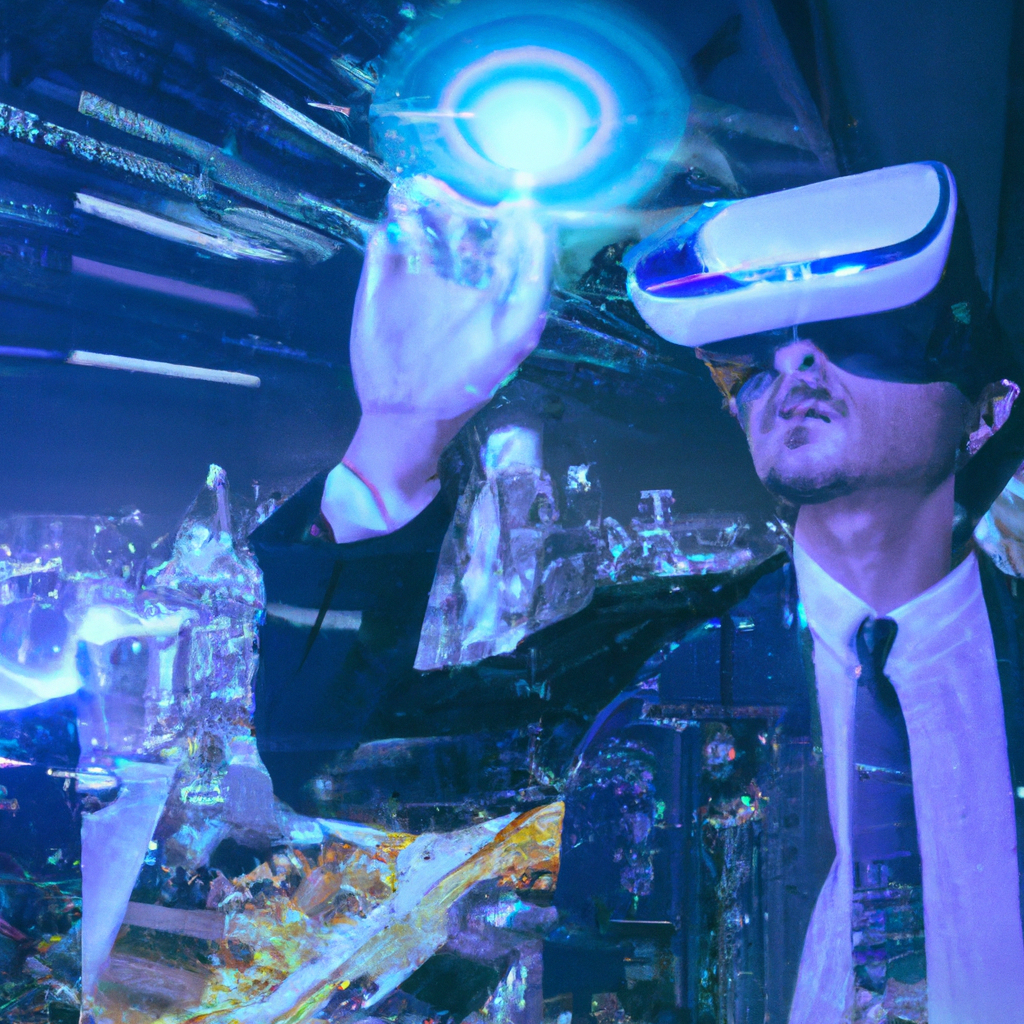작성자 정보
- dml0211 작성
- 작성일
컨텐츠 정보
- 5,174 조회
- 목록
본문

정보통신산업에서의 가상현실의 활용: 네트워크 계획 및 유지관리 강화를 위한 연구
가상 현실(VR) 기술은 네트워크 계획 및 유지 관리에 많은 이점을 제공하면서 통신 산업에 혁명을 일으키고 있습니다. VR은 시각화 개선에서 협업 강화에 이르기까지 통신 회사가 이러한 중요한 작업에 접근하는 방식을 바꾸고 있습니다.
통신 산업에서 VR의 주요 이점 중 하나는 시각화를 개선할 수 있는 능력입니다. VR은 통신 회사가 네트워크의 3D 모델을 생성하여 네트워크 구성 요소와 데이터를 실시간으로 시각화하고 분석할 수 있도록 합니다. 이를 통해 네트워크 성능을 보다 깊이 이해하고 네트워크 최적화 및 유지 관리 결정을 내릴 수 있습니다.
통신 산업에서 VR의 또 다른 중요한 이점은 협업을 개선할 수 있는 능력입니다. VR을 사용하면 지리적 거리에 상관없이 원격 팀이 실시간으로 함께 작업할 수 있습니다. 이를 통해 네트워크 계획 및 유지보수의 속도와 효율성을 크게 향상시킬 수 있을 뿐만 아니라 최종 결과의 품질을 향상시킬 수 있습니다.

VR은 또한 네트워크 계획 및 유지 관리와 관련된 시간과 비용을 줄일 수 있는 잠재력을 가지고 있습니다. VR 시뮬레이션을 사용하여 네트워크 구성이 실제 환경에 구현되기 전에 테스트하고 세분화함으로써 기업은 비용을 절감하고 장애 위험을 줄일 수 있습니다.

한국의 경우입니다:
한국에서, 통신 회사들은 네트워크 계획과 유지보수를 강화하기 위해 VR 기술을 사용하고 있습니다. 예를 들어, SK Telecom은 VR 시뮬레이션을 사용하여 네트워크 구성을 테스트하고 최적화하여 네트워크 성능을 개선하고 다운타임을 줄입니다. 이를 통해 회사는 고객에게 보다 안정적이고 효율적인 네트워크 서비스를 제공할 수 있습니다.
또 다른 한국 회사인 LG유플러스는 원격 팀 간의 협업을 개선하기 위해 VR 기술을 사용하고 있습니다. VR 시뮬레이션을 사용하여 네트워크 구성요소 및 데이터를 시각화함으로써 네트워크 유지보수 및 업그레이드를 보다 효과적으로 조정하여 다운타임을 줄이고 네트워크 성능을 향상시킬 수 있습니다.
결론은 다음과 같습니다:
가상 현실 기술은 통신 산업에 큰 영향을 미치며 기업이 네트워크 계획 및 유지 관리에 접근하는 방식에 혁명을 일으키고 있습니다. 시각화 및 협업 개선에서 시간 및 비용 절감에 이르기까지 VR은 발전을 촉진하고 네트워크 성능을 향상시키는 다양한 이점을 제공합니다. 한국에서는 SK텔레콤과 LG유플러스와 같은 회사들이 통신 산업에서 VR 기술의 사용을 선도하고 있습니다.
요약:
가상 현실(VR) 기술은 네트워크 계획 및 유지 관리에 많은 이점을 제공하면서 통신 산업을 변화시키고 있습니다. VR은 향상된 시각화, 향상된 협업, 시간 및 비용 절감, 향상된 네트워크 성능을 제공합니다. 한국에서는 SK Telecom과 LG Uplus와 같은 기업이 VR을 사용하여 네트워크 구성을 테스트 및 최적화하고, 네트워크 유지보수 및 업그레이드를 조정하고, 원격 팀 간의 협업을 개선하고 있습니다. VR 기술이 계속 발전함에 따라, VR은 미래에 통신 산업에서 훨씬 더 큰 역할을 수행하여 발전을 주도하고 네트워크 성능을 향상시킬 것입니다.

결론적으로, 제약 산업에서 가상 현실 기술의 사용은 약물 발견과 개발에 많은 이점을 제공하고 있습니다. 데이터를 시각화하고 분석하는 보다 몰입적이고 상호 작용적인 방법을 제공하여 연구자가 더 많은 정보에 입각한 결정을 내릴 수 있게 하고 약물 발견 및 개발 프로세스의 속도와 효율성을 향상시킵니다.
게다가, VR은 연구원들이 비용이 많이 들고 시간이 많이 소요되는 임상 시험을 수행하기 전에 가상 환경에서 잠재적인 약물을 테스트하고 정제할 수 있게 함으로써 약물 발견 및 개발과 관련된 시간과 비용을 줄일 수 있는 잠재력을 가지고 있습니다.
한국에서, 삼성 바이오에피스와 같은 회사들은 이미 그들의 약물 발견과 개발 노력을 강화하기 위해 VR 기술을 사용하고 있습니다. 데이터를 시각화하고 분석하기 위해 VR 시뮬레이션을 활용함으로써 Samsung Bioepisc는 더 많은 정보에 입각한 결정을 내리고 의약품 발견 및 개발 프로세스의 속도와 효율성을 향상시킬 수 있습니다.
전반적으로 가상현실이 생명공학 산업에 미치는 영향은 분명하며, VR 기술이 지속적으로 발전함에 따라 향후 약물 발견 및 개발 과정에서 훨씬 더 큰 역할을 할 것으로 보입니다.

요약:
가상현실(VR) 기술은 특히 약물 발견 및 개발 분야에서 생명공학 산업에 큰 영향을 미치고 있습니다. VR은 데이터를 시각화하고 분석하는 보다 몰입적이고 상호 작용적인 방법을 제공하여 약물 발견 및 개발 프로세스의 속도와 효율성을 향상시킵니다. 한국에서, 삼성 바이오에피스와 같은 회사들은 그들의 약물 발견과 개발 노력을 강화하고 더 많은 정보에 입각한 결정을 내리기 위해 VR을 사용하고 있습니다. VR 기술이 계속 발전함에 따라, 그것은 훨씬 더 큰 역할을 할 것입니다
The Use of Virtual Reality in the Telecommunications Industry: Enhancing Network Planning and Maintenance
Virtual reality (VR) technology is revolutionizing the telecommunications industry, offering numerous benefits for network planning and maintenance. From improved visualization to enhanced collaboration, VR is changing the way that telecommunication companies approach these critical tasks.
One of the key benefits of VR in the telecommunications industry is its ability to improve visualization. VR enables telecommunications companies to create 3D models of their networks, allowing them to visualize and analyze network components and data in real-time. This leads to a deeper understanding of network performance and can inform network optimization and maintenance decisions.
Another important benefit of VR in the telecommunications industry is its ability to improve collaboration. VR enables remote teams to work together in real-time, regardless of geographical distance. This can greatly increase the speed and efficiency of network planning and maintenance, as well as improving the quality of the final result.
VR also has the potential to reduce the time and cost associated with network planning and maintenance. By using VR simulations to test and refine network configurations before they are implemented in the real world, companies can save money and reduce the risk of failure.
Case in Korea:
In Korea, telecommunications companies are using VR technology to enhance network planning and maintenance. For example, SK Telecom is using VR simulations to test and optimize network configurations, leading to improved network performance and reduced downtime. This is helping the company to provide more reliable and efficient network services to its customers.
Another Korean company, LG Uplus, is using VR technology to improve collaboration between remote teams. By using VR simulations to visualize network components and data, the company is able to coordinate network maintenance and upgrades more effectively, reducing downtime and improving network performance.
Conclusion:
Virtual reality technology is having a major impact on the telecommunications industry, revolutionizing the way that companies approach network planning and maintenance. From improved visualization and collaboration to reduced time and cost, VR offers numerous benefits that are driving progress and improving network performance. In Korea, companies such as SK Telecom and LG Uplus are leading the way in the use of VR technology in the telecommunications industry.
Summary:
Virtual Reality (VR) technology is transforming the telecommunications industry, offering numerous benefits for network planning and maintenance. VR offers improved visualization, enhanced collaboration, reduced time and cost, and improved network performance. In Korea, companies such as SK Telecom and LG Uplus are using VR to test and optimize network configurations, coordinate network maintenance and upgrades, and improve collaboration between remote teams. As VR technology continues to evolve, it is likely that VR will play an even greater role in the telecommunications industry in the future, driving progress and improving network performance.
In conclusion, the use of virtual reality technology in the pharmaceutical industry is offering numerous benefits for drug discovery and development. It provides a more immersive and interactive way of visualizing and analyzing data, enabling researchers to make more informed decisions and improving the speed and efficiency of the drug discovery and development process.
In addition, VR has the potential to reduce the time and cost associated with drug discovery and development, by allowing researchers to test and refine potential drugs in a virtual environment before conducting expensive and time-consuming clinical trials.
In Korea, companies such as Samsung Bioepis are already using VR technology to enhance their drug discovery and development efforts. By leveraging VR simulations to visualize and analyze data, Samsung Bioepis is able to make more informed decisions and improve the speed and efficiency of their drug discovery and development process.
Overall, the impact of virtual reality on the biotechnology industry is clear, and as VR technology continues to evolve, it is likely that it will play an even greater role in the drug discovery and development process in the future.
Summary:
Virtual Reality (VR) technology is having a major impact on the biotechnology industry, especially in the field of drug discovery and development. VR provides a more immersive and interactive way of visualizing and analyzing data, improving the speed and efficiency of the drug discovery and development process. In Korea, companies like Samsung Bioepis are using VR to enhance their drug discovery and development efforts and make more informed decisions. As VR technology continues to evolve, it will likely play an even greater role in the biotechnology industry in the future.







